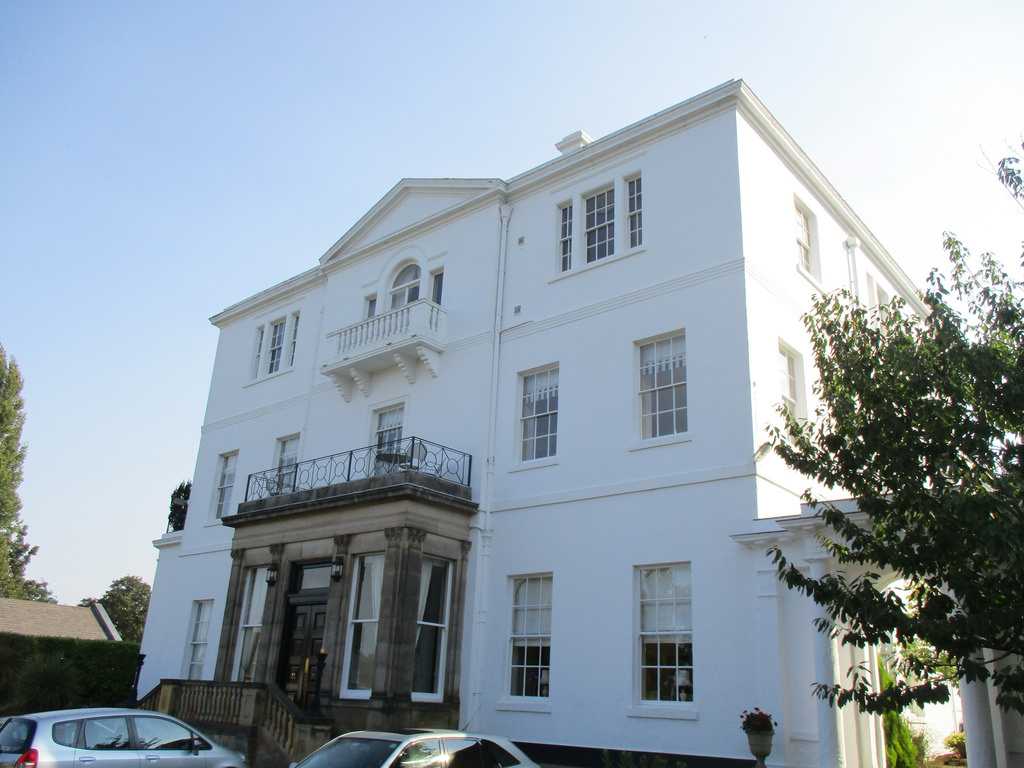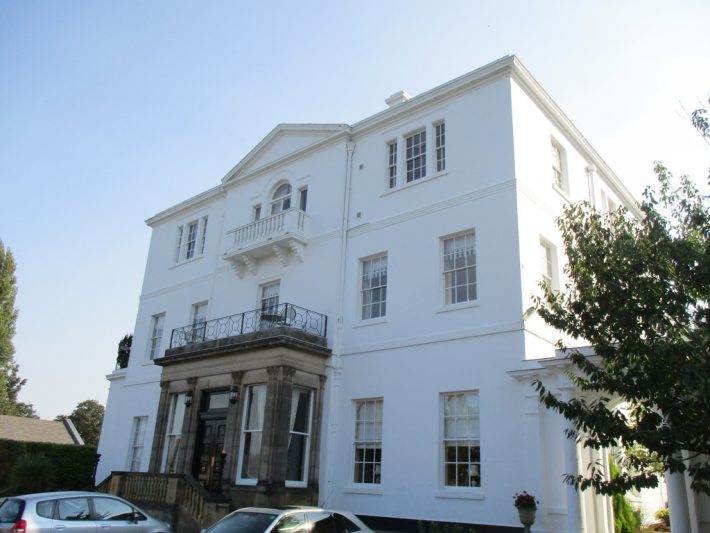Mapperley Hall on Lucknow Avenue was built in 1792 by the Wright Family.
Ichabod Wright was the second generation of a family that were bankers on Long Row Nottingham. He and his wife Harriet had 3 sons and 10 daughters. They therefore needed a large house for all the family. His son Ichabod Charles Wright carried on the family business joining his father in 1825. Charles is better known as a translator, famous for his work on the inferno of Dante turning it into English rhyme. The house was considerably altered in 1845.
Charles Took over Mapperley Hall on his father’s death in 1862. When Charles died in 1871 his son Colonel Charles Wright started to sell the land due south of the hall on which six houses were built.
The Hall was again altered with additions made in 1889-90 designed architect by Robert Evans, who had been a business partner of the Nottingham Architect, Thomas Chambers Hine.. He eventually left the practice in 1867 to set up on his own.
Student Accommodation And Hospital
The Hall remained in the Wright family until 1900 when it was sold together with 18,000 yards of land to the University College Nottingham the forerunner of the University of Nottingham for about the value of the land at the time £3400. They used the buildings as a residential home for their students who were preparing for, and intending to become, teachers in elementary schools. With the introduction of the 1902 education act there was a great expansion in the need for trained teachers. There was a move away from the old pupil teacher system to full time training at centres set up around the country. The university College Nottingham being one of these welcoming students from other towns and areas. There was therefore a need of accommodation for these full time trainees. One of the University College students at this time was the young DH Lawrence who was training as a teacher. The hall of residence opened in 1906 with 86 students under the care of professor Amos Henderson and his wife. A similar hall for the female students was opened in Raleigh Street no mixed halls in those days!
During the first world-war there was a great need for building to be used as auxiliary hospitals for the wounded returning from France. With many of the students now in the services the Hall was offered to the St Johns Ambulance who took over the building. It was converted into a 40 bed hospital as the Mapperley Hall Auxiliary Hospital opening for arriving wounded 1916. The Commandant and driving force of the hospital was Lady Cecily Mary Cavendish-Bentinck who ran it successfully throughout the war. She was the wife of Lt Col Lord Charles Cavendish-Bentinck who was the Deputy Lieutenant of Nottinghamshire and fought in France during world war one. Arnot Hill House in Arnot Hill Park Arnold was also used as an Auxiliary Hospital.
After the war the hospital at Mapperley was no longer needed so Mapperley Hall reverted back to student accommodation.
Nick Fryer shared this memory with us:
My late grandfather studied at what was then University College Nottingham and lived in Mapperley Hall. He studied languages and became a teacher. This would have been in the mid-1920s. As such your statement that the Hall became offices at the end of the Great War is not correct as it appears there was a post-war period when it reverted to student accommodation.
When I lived in Mapperley in the late 1980s we visited the hall (my grandfather having lived most of his adult life in Falmouth). The hall was then vacant and in the process of being sold to I think, East Midlands Electricity. My grandfather persuaded the security guard to allow us to enter so that he could visit his old bedroom. He recalled climbing out of the window on the first floor, onto the balcony above the front door when playing games as a student! It pleased him very much to visit his old student accommodation.
Grade II Listing
It was recorded with Historic England as a Grade II listed building on July 12 1972.
Mapperley Hall is now used as apartments.
Many thanks to historian Bob Massey for allowing us to use his research.
Bob is writing a book about this hospital as part of the First World War Arnold Local History Group.



Nick Fryer
Hi Bob.
My late grandfather studied at what was then University College Nottingham and lived in Mapperley Hall. He studied languages and became a teacher. This would have been in the mid-1920s. As such your statement that the Hall became offices at the end of the Great War is not correct as it appears there was a post-war period when it reverted to student accommodation.
When I lived in Mapperley in the late 1980s we visited the hall (my grandfather having lived most of his adult life in Falmouth). The hall was then vacant and in the process of being sold to I think, East Midlands Electricity. My grandfather persuaded the security guard to allow us to enter so that he could visit his old bedroom. He recalled climbing out of the window on the first floor, onto the balcony above the front door when playing games as a student! It pleased him very much to visit his old student accommodation.
Regards,
Nick Fryer
Editor
Hello Nick. Many thanks for this fantastic family memory and for correcting the information.